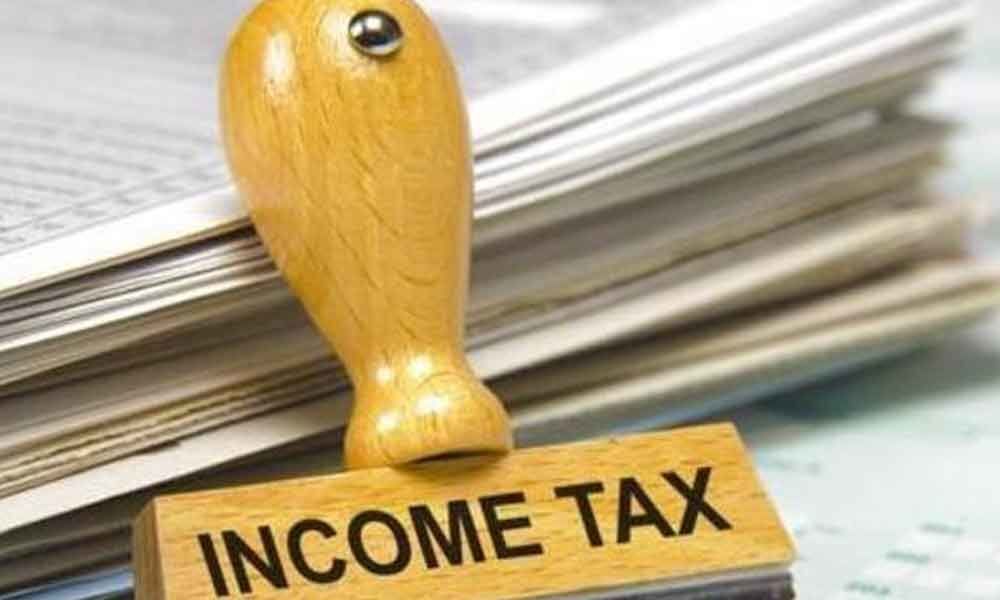Live
- WBSSC Claims Eligibility For 19,000 Dismissed Staff Amidst Teacher Recruitment Scandal
- Tollywood’s shifting landscape: The growing influence of OTT platforms
- YSR Congress Party MLA candidate KK Raju campaigns in 23rd Ward Priyadarshini Colony
- Leaders and Residents Welcome TDP Candidates Pulivarthi Nani and Daggumalla Prasada Rao in Tirupati
- 30 Families Switch Allegiance from YSR Congress to Telugu Desam Party in Batladinne Village
- Mannara Chopra’s refreshing photoshoot brings summer vibes
- Vishal’s thriller ‘Rathnam’ clears censor; all set to hit theatres
- Rashmika wraps up key schedule of Dhanush’s ‘Kubera’
- Cycling vs walking: Which is better for weight loss?
- ‘The Delhi Files’ to hit floors this year
Just In
Income Tax Return 2019: E-Assessment Scheme For Faceless Tax Scrutiny Notified


The Government has notified the e-assessment scheme 2019 for conducting faceless scrutiny assessment of income tax returns (ITR).
The income tax department's scheme to assess tax returns electronically without any personal contact between officials and taxpayers have come into effect. Individual representation is allowed under the scheme in specific conditions such as appeals against the assessment.
The scheme involves the creation of e-assessment centres at national and regional levels; auto-allocation of cases among these centres. It affirms that all communication with taxpayers and between the assessment centres will be done electronically only; communications to be authenticated digitally, most importantly, assessees will not make a personal appearance at centres.
Even the assessment will be governed by specific pre-determined risk assessment criteria and other pre-fixed broad parameters.
Abhishek Soni, Founder & CEO, tax2win.in, an ITR filing website said, "The new scheme notified by the Central Board of Direct Taxes will change the way ITR will be scrutinised. Earlier, the ITR was scrutinised by the assessing office during the proceeding period. Your ITR will be scrutinised through a computerised randomly selected regional unit which will be set up under the scheme."
Here are 10 things you need to know about the E-assessment Scheme, 2019:
1. According to the scheme, the notification of scrutiny will be issued to the person under section 143 (2) if they have under-reported their income or shown excessive losses.
2. The person must respond within 15 days from the date of receipt of the notification. The notice issued will be sent electronically to the taxpayer's account on the e-fling website, to the taxpayer's registered email address or in the tax department's mobile application that has the registered mobile number.
3. The person needs to respond to the notification or order received only through the registered account. The response will be considered successfully submitted once the individual has received the acknowledgement from the National e-assessment Center.
4. Individual taxpayers need not appear personally or through an authorised representative concerning the proceedings related to the scheme before the income-tax authority, the National e-assessment centre or the Regional e-assessment centre or any unit established under the scheme.
5. All communication between the department and the taxpayer would be done purely electronically. Even all internal communication within the tax department will be electronic.
6. The e-assessment scheme will be fully automated. According to the scheme, the national e-assessment centre can assign the case of scrutiny to any regional e-assessment centre through a computerised allocation system.
7. If the regional evaluation needed assistance from the verification unit or technical support from the technical unit, these requests would also be processed through the automated allocation system.
8. If the regional assessment unit wants more information or documents from the taxpayer, then that request must first be made to the National e-assessment centre.
9. The regional assessment unit will prepare a draft assessment order and send it to the National e-assessment Center.
10. The National e-assessment Centre will inspect the draft received following the risk management strategy specified by the CBDT.

© 2024 Hyderabad Media House Limited/The Hans India. All rights reserved. Powered by hocalwire.com






